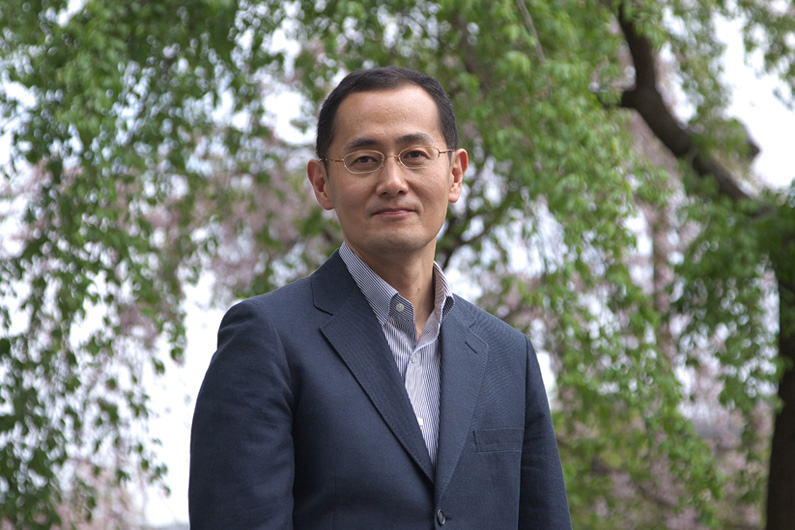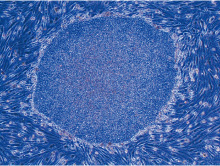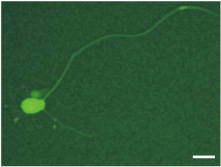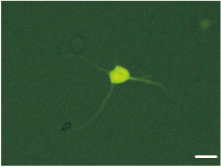niponica is a web magazine that introduces modern Japan to people all over the world.
2013 No.10

To read the e-book you need to have JavaScript enabled in your browser and a free Flash Player plug-in from Adobe Systems Inc. installed.
Quality with a Japanese Flair

Revolutionary Techniques
to Fight Disease
Medical Therapies for the World, Pioneered in Japan
Researchers in Japan are working every day on new ways to treat illness. For many of them, the critical focus is developing reliable therapies for intractable diseases and cancer. These pages highlight new discoveries in two fields now in the spotlight worldwide: iPS cell technology, and heavy particle beam cancer therapy.

Professor Yamanaka Shinya was awarded a Nobel Prize for creating induced pluripotent stem (iPS) cells.
(Photo courtesy of the Center for iPS Cell Research and Application, Kyoto University)
iPS cell technology—
Using multi-purpose cells to conquer intractable diseases

A cell assembly of human iPS cells made from fibroblasts (cells in connective tissue). The assembly measures about 0.5 mm across. (Photo courtesy of Professor Yamanaka Shinya, Kyoto University)
The 2012 Nobel Prize in Physiology or Medicine was awarded to Professor Yamanaka Shinya, the Director of the Center for iPS Cell Research and Application at Kyoto University. The prize recognized his 2006 achievement of creating induced pluripotent stem (iPS) cells from mouse skin cells.
The fertilized human egg splits into cells (human somatic cells), each having some special function. After somatic cells mature, they are no longer able to transform themselves into cells with a different function. Professor Yamanaka, however, discovered that, by adding four genes to mouse somatic cells, it is possible to induce the cells to become like fertilized cells; in other words, like cells that have not yet been assigned a function. What he made were iPS cells.
Within iPS cells lies the powerful potential to drive new medical advances, especially regenerative medicine and the discovery of new drugs.
In the field of regenerative medicine, there are hopes that iPS cells will be used to make cells for different organ tissues which can be transplanted into the patient's body. The goal is to regenerate lost functions. In Japan, preparations are underway to conduct the world's first clinical research using iPS cells to treat age-related macular degeneration (degeneration of the central part of the eye's retina, as the body ages).
The motor nerves of amyotrophic lateral sclerosis (ALS) patients (above right) are far shorter than those of a healthy person. The bars in the illustrations indicate a length of 10 micrometers. (Courtesy of Inoue Lab, Center for iPS Cell Research and Application, Kyoto University)
Research focusing on developing new drugs offers hope for treating diseases that are presently incurable. One such disease is amyotrophic lateral sclerosis (ALS), in which the muscles of patients weaken quickly to the point where, finally, they are unable to breathe. Professor Nakahata Tatsutoshi, a Deputy Director of the Center for iPS Research and Application, explains: "In the case of ALS, motor nerves that are supposed to control muscle movement degenerate and eventually die, causing the muscle to weaken. We know this much, but we still don't understand why the motor nerves degenerate, so we still can't develop a therapy for the disease."
Even so, research into iPS cells may be able to zero in on the cause and mechanisms of the disease. If researchers can develop iPS cells using a patient's own cells, they should be able to make motor nerves that have the genes of the patient. Two steps leading toward success are: observing when motor nerves develop abnormalities, and then pinpointing why they do that. This could lead to the development of new therapeutic drugs. Says Professor Nakahata, "For incurable diseases whose cause is still unknown, developing a treatment using iPS cell technology would be a really dramatic breakthrough. Japan leads the way in basic research on iPS cells, and we hope to advance our applied research to the stage where we can help patients, and show the world how this can be done."
By adding several genes to somatic cells from skin or some other organ, it is possible to make iPS cells that can transform themselves into different types of cells.
Beating cancer with heavy particle beam therapy

The world's first heavy particle accelerator (HIMAC) takes up about the same space as a soccer field. The large accelerator creates carbon ion beams used in medical treatments.
Japan has the longest average life expectancy in the world, and yet cancer remains the country's number-one killer. More and more people are dying of cancer worldwide. New treatment methods are being developed almost on a daily basis, and one of them attracting plenty of attention is heavy particle beam therapy.
Heavy particle beam therapy is a type of radiation therapy in which cancer cells are attacked with high-frequency beams of carbon ions. The strong beam is focused on a small area, so it can offer effective treatment in a short period of time, and has few side effects. Clinical trials of heavy particle beams began in 1994 at Japan's National Institute of Radiological Sciences, and the new method has been used to treat more than 7,000 patients so far. Bone cancer and muscle cancer are difficult to cure using other methods, but heavy particle beam therapy can be highly effective. France, China, the Republic of Korea, Malaysia, Russia and Saudi Arabia are some of the countries considering adopting it, and there is hope it will play a key role in curing cancer in the future.





